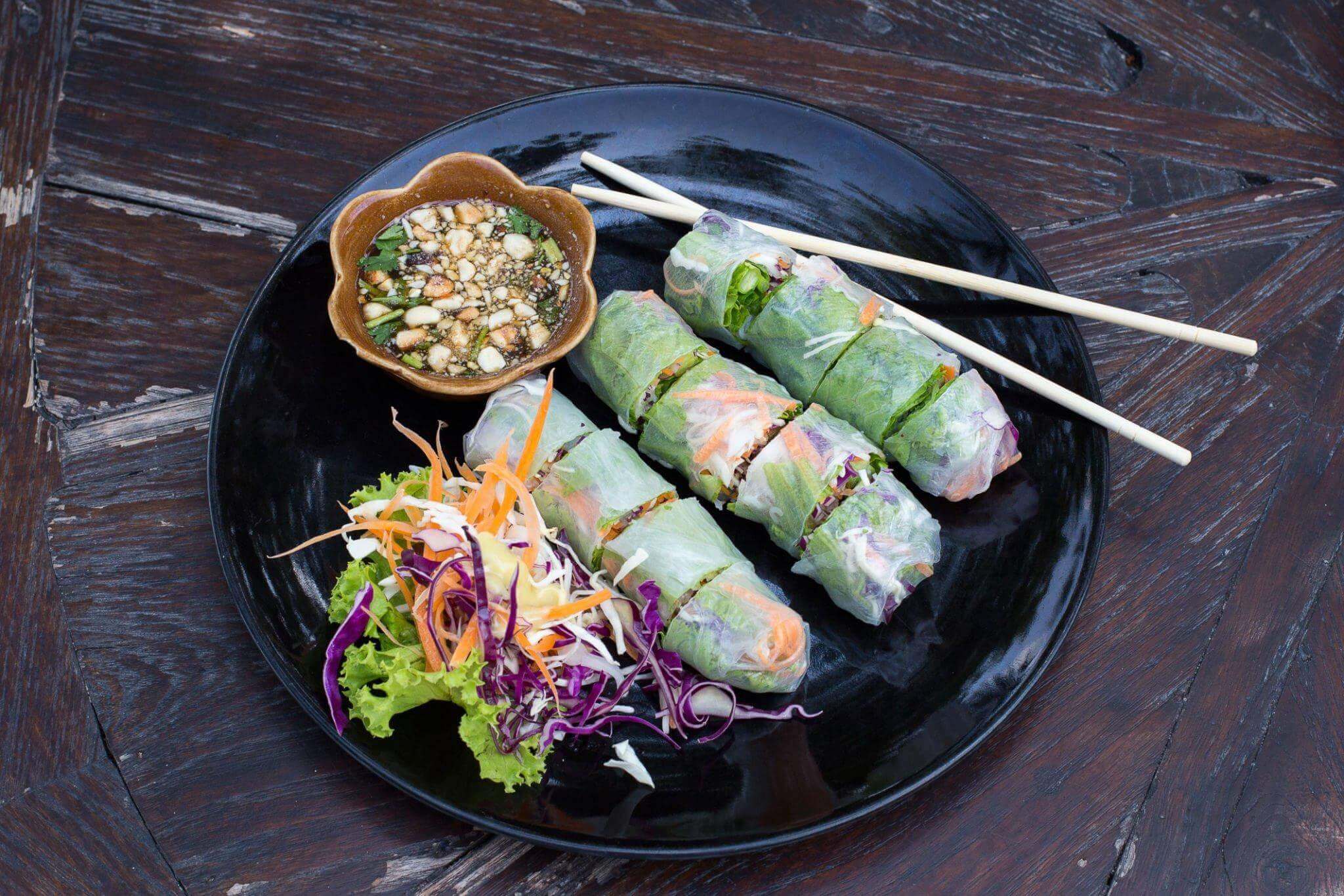Vietnamese fresh spring rolls, also known as “Gỏi cuốn”, are a delightful and refreshing dish that has been enjoyed in Vietnam for generations. These rolls, made with delicate rice paper and filled with a variety of ingredients such as rice noodles, herbs, cooked meats, and raw vegetables, are a staple in Vietnamese cuisine. With their light and healthy nature, it is no surprise that fresh spring rolls have become a popular dish not just in Vietnam, but around the world.
Origin
The exact origin of Vietnamese fresh spring rolls is not clear, but they have been a part of Vietnamese cuisine for many centuries. Some sources suggest that fresh spring rolls have been enjoyed in Vietnam since the 10th century, during the time of the Nguyen dynasty. Others believe that the dish has its roots in the northern region of Vietnam, where it was traditionally served as a snack or light meal.
Regardless of its exact origin, fresh spring rolls have become an integral part of Vietnamese cuisine, with a rich history and cultural significance. The dish has evolved over time, with different regions of Vietnam putting their own spin on the traditional recipe by incorporating local ingredients and flavor profiles.
The Traditional Ingredients
Rice paper
Rice paper is a thin and translucent sheet made from rice flour and water and is the key ingredient in making fresh spring rolls. The rice paper provides the wrapper for the filling ingredients and must be softened in water before being filled and rolled.
Rice noodles
Rice noodles, also known as “bún”, are thin and delicate noodles made from rice flour and water. They add a chewy texture to the filling and are a staple ingredient in many Vietnamese dishes.
Fresh herbs and greens
Fresh herbs and greens such as mint, cilantro, and lettuce, add a burst of flavor and freshness to the rolls. These ingredients are typically chopped and mixed with the filling ingredients to create a well-balanced and flavorful dish.
Cooked meat
Cooked meat, such as shrimp, pork, or chicken, adds protein and flavor to the rolls. The meat is typically cooked and sliced or diced before being added to the filling mixture.
Raw vegetables
Raw vegetables, such as carrots and cucumber, add crunch and freshness to the rolls. These ingredients are typically julienned or sliced before being added to the filling mixture.
Each of these ingredients plays a crucial role in the overall flavor and texture of the fresh spring rolls, making them a delightful and satisfying dish.
Variations and Modern Takes
Vietnamese fresh spring roll is a versatile dish that has been adapted and transformed in various ways to meet the changing tastes and dietary needs of modern consumers.
Vegan and Vegetarian Options
With the growing demand for plant-based options, vegan and vegetarian variations of fresh spring rolls have become increasingly popular. These rolls are typically made with a filling of tofu, mushrooms, or other plant-based ingredients, and can be just as delicious and satisfying as the traditional meat-filled rolls.
Use of Different Meats and Seafood
In addition to traditional meats such as pork and chicken, fresh spring rolls can also be made with other meats and seafood. Variations can include beef, lamb, crab, lobster, and more, providing an endless array of options for those who want to try something different.
Different Dipping Sauces
Fresh spring rolls are typically served with a dipping sauce, such as peanut sauce or sweet chili sauce. With the rise of fusion cuisine, many modern variations of dipping sauces have emerged, incorporating different flavor profiles and ingredients, such as wasabi, sriracha, and more.
Innovations in Wrapping and Presentation
While the traditional way of wrapping fresh spring rolls involves rolling the ingredients in a rice paper wrapper, modern innovations have brought new and creative ways to present the dish. Some examples include cone-shaped rolls, wrapped in edible rice paper cones, or bite-sized rolls, making them perfect for appetizers and party snacks.
These variations and modern takes on the traditional dish continue to push the boundaries of what is possible with Vietnamese fresh spring rolls, providing endless possibilities for creativity and flavor.
A Perfect Balance of Flavors and Textures
Fresh spring rolls are a testament to the skill and creativity of Vietnamese cuisine, combining the perfect balance of flavors and textures in a simple yet satisfying dish. The use of rice paper, rice noodles, fresh herbs and greens, cooked meat, and raw vegetables, all contribute to the unique character of the dish.
The versatility of the dish, in terms of both ingredients and presentation, makes it a favorite for food lovers everywhere and ensures its place as a staple of Vietnamese cuisine for years to come. the popularity and versatility of Vietnamese fresh spring rolls are a testament to the timeless appeal of this delicious and satisfying dish.







